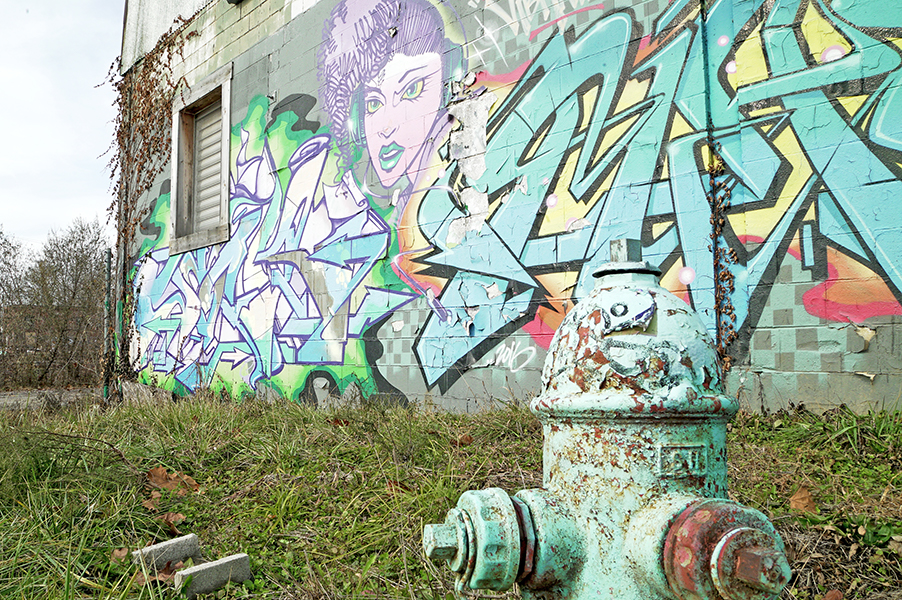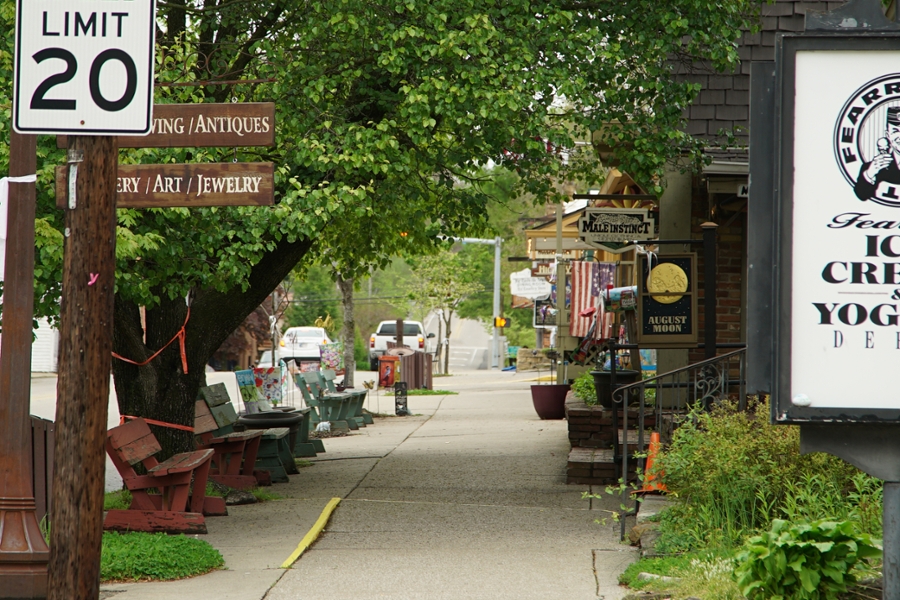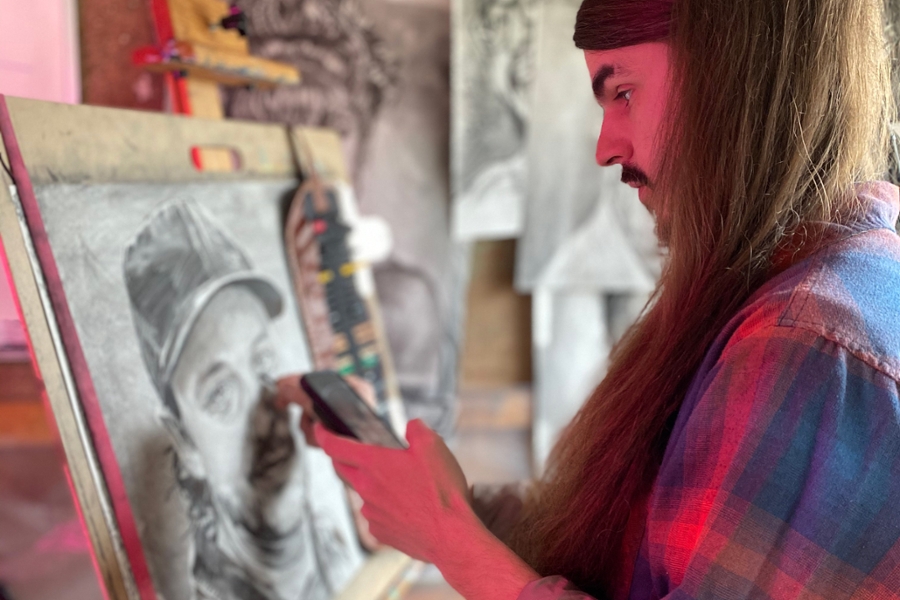Painted on the outside walls of The Warehouse on South Rogers Street, there’s a giant purple rat holding a hot dog with sharp teeth. To the left of it, a woman’s face, also purple, boasts green lips and striking eyes.
On the far end are big, bold block letters that leap right out of the wall. They’re painted in electric green and yellow, outlined in various shades of black, purple and blue. The letters spell out the word, “Brisk.”
To passersby, the images of the rat, the woman and even the letters may be viewed as distasteful marks on an innocent building’s walls. But to Bloomington native Mike Burchfield, otherwise known as the artist Brisk, these marks exist as a form of personal expression that has never had any boundaries or rules - and probably never will.
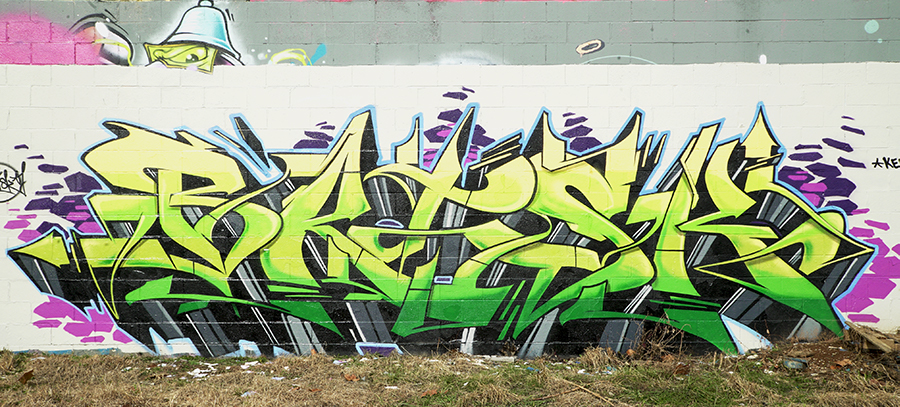
“I’m not a super social person in general, but I’ve always been artistically inclined,” Burchfield said. “Graffiti is kind of like a perfect match for me.”
The idea behind graffiti is not a new revelation. As long as walls and floors have provided blank canvases, people have created on them. There were the cave paintings of the Paleolithic age; the Latin inscriptions carved onto Pompeii’s walls; names written under bridges during the “hobo era” post--Civil War; and even the dates and names that Russians scribbled on the walls after the 1945 overtaking of the Reichstag building in Germany.
Before spray paint, individuals used anything they could get their hands on to create art: paint, chalk, charred wood, grease; and even sharp tools like knives or picks.
Caleb Neelon, graffiti artist and co-author of “The History of American Graffiti,” wrote, “People, by the time they had walls, they were writing on them.”
Once spray paint was invented in 1949, it was rare to see walls in Los Angeles during that time that weren’t covered with airbrushed murals and images.
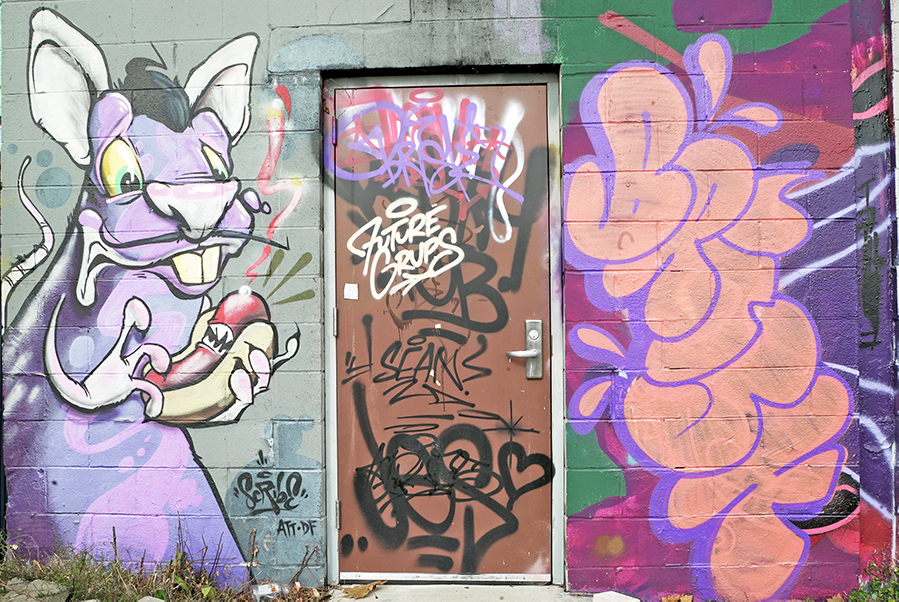
In the decades that followed, a vibrant graffiti community was formed, complete with its own terminology. Some notable words include:
Bomb (verb) - to paint many surfaces in one area
Burner (noun) - a graffiti piece on a wall of great quality; a significantly cool or larger piece
Graf (noun) - a shortened term for graffiti
Piecing (verb) - the practice of doing graffiti
Tag (noun) - the most basic writing of an artist’s name; a graffiti artist’s personalized signature
Throw-up (noun) - tag-like drawings with large puffed-up letters.
Writer (noun) - a graffiti artist
It’s important to note that graffiti is not the same as street art. Street art is another way of interacting with space that invades the street itself and alters what is already set up naturally or what was man-made. For example, suppose there’s a chip in a panel of bricks on the sidewalk. A street artist could paint a stack of Legos inside that chip, replacing a deformity with a piece of art.
For as long as graffiti has existed, the question has loomed large: Is graffiti vandalism?
Legally? Yes.
But that doesn’t stop graffiti artists from partaking in the rebellious act. In fact, that might be the very reason they do it. Just ask Malcolm Smith, former graffiti artist and current associate professor at Indiana University.
“It’s never not been vandalism,” Smith said. “But there’s a moment where a writer thinks, ‘I’ve made and taken the risk. What am I going to put on the wall? It’s mine, and it’s my ideas. There is no other code telling me where it starts and stops, so I’ve got to create all of its rules.’”
Since graffiti is a world filled with so much anonymity, most writers feel the need to be seen any way possible.
“My theory is that with art in general, the piece should speak for itself. It shouldn’t be about the person who does the piece,” Burchfield said. “Of course, the person who made it has a lot to do with it, but the piece should stand on its own two legs.”
It’s common for writers to keep their identity a secret, either because they know graffiti is an illegal act or they enjoy the cat-and-mouse game of fans trying to uncover their secret.

Some graffiti artists prefer to be known in the communities where they live rather than keeping their identities a secret. Burchfield is well known in the Bloomington graffiti community.
“Since I’m careful about the things I’m tagging and what kind of things I’m tagging, there’s no need for people to not know who I am,” Burchfield said. “Even though I have a nickname, I don’t necessarily want to be hidden from anyone who has a reaction to my work.”
Other Bloomington graffiti artists manage to keep their identity a secret, even after they have retired from doing graffiti. Bloomington artist David Ebbinghouse came up with his alter ego, “Tom Cat Spray,” after noticing how graffiti artists communicate via their artwork.
“The people who live here are communicating like cats, like they’re pissing in the alley,” he said. “They leave their mark.”
Ebbinghouse said about his artist pseudonym, “I wasn’t getting pleasure in playing cops and robbers and getting away with being a vandal. I was very much invested in creating an alter ego and then having that persona become, in some sense, even more famous. In Bloomington, a lot of people know Tom Cat Spray and like his work, but they don’t know about David Ebbinghouse.”
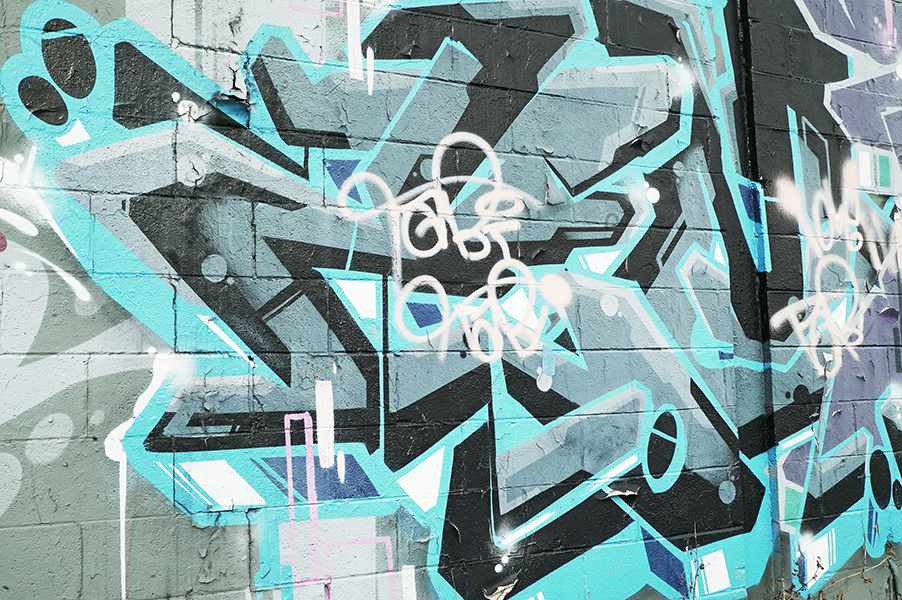
Like it did for Ebbinghouse, Smith and Burchfield, writing gives artists an outlet to showcase their status, proliferation of one’s name and their artistic expression. If they get tired of looking at a certain piece or wanted to add another artistic flair to their work, they can - just by painting over it and starting anew.
Smith says it’s common for people to fuse together graffiti and malicious vandalism, mainly because the two are usually of the same medium: spray paint.
However, he says each mark is a part of a much larger scale and while graffiti is technically vandalism, the intent behind the art should be examined with a wider lens.
“[Maliciousness] is someone saying, ‘I’m going to intentionally spray this wall with no artistic intent, and there’s no end in sight,’” said Smith. “There is an implicit act of vandalism necessary if you decide that you’re going to paint a wall without permission.”
This unspoken code of ethics includes not tagging certain architectural pieces that have some sort of significance to them, like a carved rock or stone building.
“You don’t do that because it’s going to draw negative attention, first of all, to your presence or to the presence of the activity within your community. But also, these young artists will have an implicit appreciation for those things, and they would not want to deface these places,” Smith said. “They value the same things that we value.”
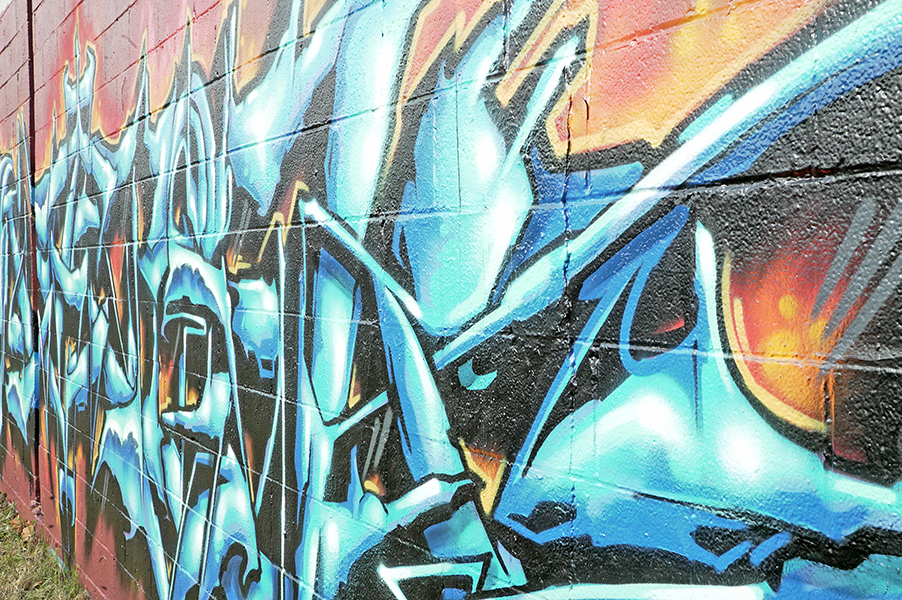
Having their artwork presented in an art showcase or featured in an art gallery behind a protective glass case usually doesn’t appeal to graffiti artists. They prefer to draw out emotions from pedestrians, whether that be entertainment, agitation or even confusion.
“Graffiti is personal expression and communication in an advancement of a form in the public sphere,” Smith said. “It doesn’t need a gallery to say we’re going to show you our work. It makes its own gallery.”
“The benefits I get from it are purely psychological. It’s satisfaction and a job well-done,” Ebbinghouse said. “I’m able to reach an audience and I’m getting people excited and stirred up about it. It’s certainly not because I get famous.”
Graffiti has withstood more than just a little change in its lifespan. From existing as a mere political activism tactic during world wars, to teenagers writing their names on trains, to inspiring Bloomington artists, graffiti clearly isn’t going to be suppressed anytime soon.
“There’s always been different communities that attempt to suppress graf. It will never happen,” Smith said. “Why don’t we [the public], in general, stop trying to squash it? There’s lots of levels to it, but the actual painting is a non-violent act.”
A few places, like The Warehouse in Bloomington, encourage graffiti on its exterior walls. Most of Burchfield’s work is displayed at the South Rodgers Street location. According to the Warehouse website, groups and individual artists must have prior permission from the art director before they paint graffiti on the walls.
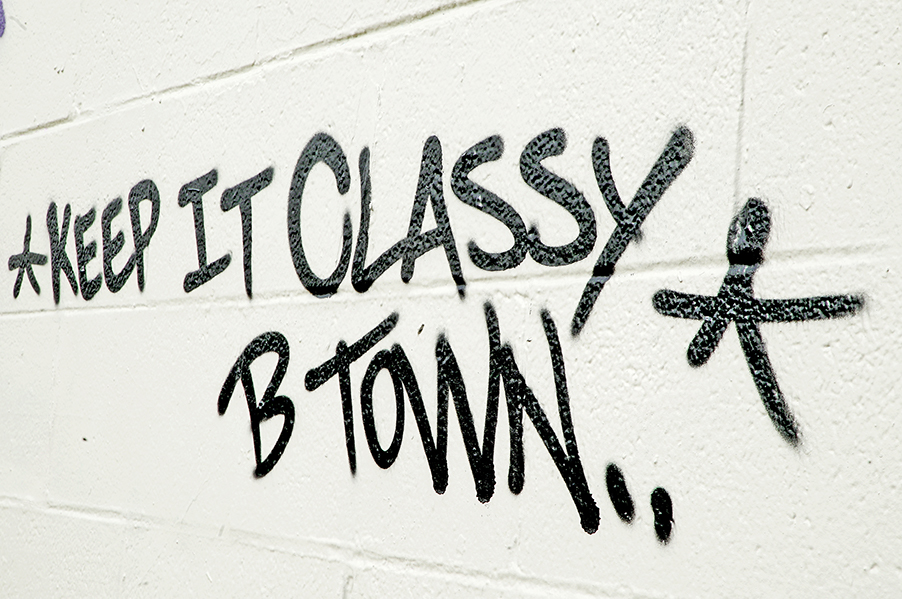
“Not a lot of people come out here and paint over the walls with bad things. They spend time on their painting and make sure it actually looks nice,” Burchfield said. “Being younger, there wasn’t anything like this. I had to paint trains.”
But to some graffiti artists like Ebbinghouse, going through proper channels and obtaining permits starts to muddy the waters of why writers came to the art in the first place.
“We are doing something that’s not permitted. It’s not my property that I’m spraying on. Nobody told me I could do that,” Ebbinghouse said. “But I figured that’s my artistic license. My artistic license got expanded to be anything I don’t get apprehended for.”

